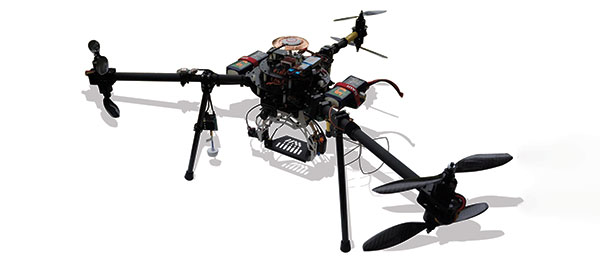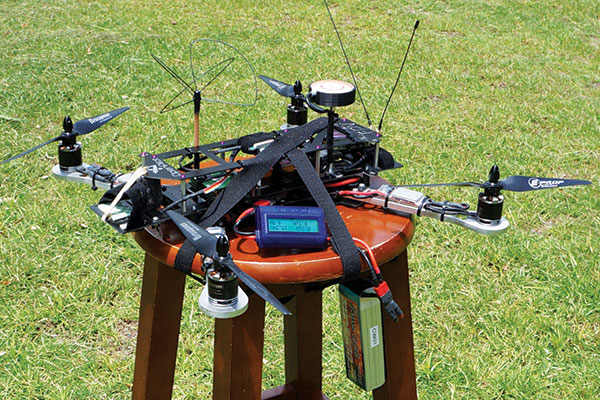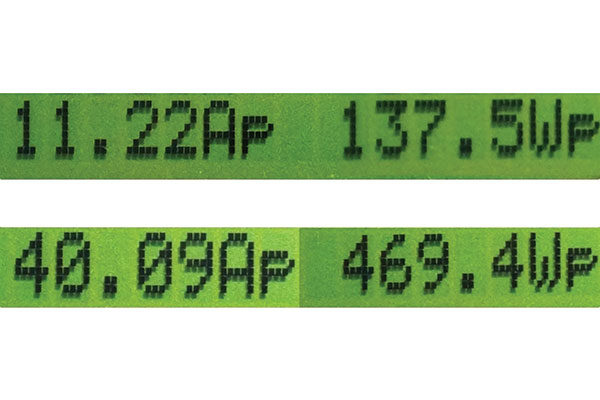The Battery Clinic: November 2013

Written by Red Scholefield Battery selection for multirotor aircraft Column As seen in the November 2013 issue of Model Aviation.
“The time has come,” the Walrus said, “To talk of many things: Of shoes—and ships—and sealing-wax …” —Lewis Carroll Through the Looking-Glass After more than eight years, “The Battery Clinic” column has come to an end. There has not been enough information about new batteries and systems for me to write about. I am fortunate to have enlisted Craig Wainwright, a local modeler who has been working with multirotors for more than five years, to share his experience as a guest writer for my final column. Craig is a technical support engineer for General Electric and specializes in Linux.
Choosing the Best Battery for Your Multirotor
When choosing the best battery for your multirotor, there are a few things to consider, but you must first do some homework. My goal is to help you find the best batteries for your multirotor, based on the hardware requirements and application. There are a couple of important things you should consider when doing any maintenance, testing, or troubleshooting with RC multirotor models. The first and most important is that you always remove the propellers when they are not necessary. I cannot stress enough the importance of this. If you must have the propellers mounted on the motors, as is necessary in some testing steps, please have the model secured to a heavy stationary object and keep people (especially children) and pets away from the area. As you can see in the photo below, the multirotor is fastened to a heavy wooden stool with Velcro straps. This provides a convenient, safe, and reliable test stand. You also need a way to measure the voltage, amperage, and wattage of your power system. A tool such as the widely used Watts-Up meter is invaluable. Measuring power system capabilities is slightly different on a multirotor than on a single-motor RC airplane or helicopter. If you connect your meter between the battery and power distribution of your multirotor model (all ESCs and motors are powered), you must divide the measurements by the total number of motors used. To demonstrate, I measured peak watts (Wp) and peak amps (Ap), first with a single motor connected and second with all four motors connected as shown in one of the photos. In the following text, all references to volts, amps, and watts refer to a single motor and ESC.
This multirotor is secured for testing.
Before reviewing battery options, you need to do a calculation regarding thrust. All-up weight is the total weight of your model in its ready-to-fly state, with all electronics, battery, etc. The standard rule of thumb for multirotors is that your power system (motor and ESCs) should be capable of producing thrust equal to twice the total all-up weight of your multirotor. The equation for this is surprisingly simple. The thrust-per-motor requirement should be the all-up weight of your multirotor divided by the total number of motors. For a multirotor with four motors, each must be capable of producing half of the aircraft’s weight in thrust. If your quadcopter has a weight of 50 ounces, and 50 ounces divided by 2 equals 25 ounces, then each of your motors must have at least 25 ounces of thrust at 100% throttle. For 450-size multirotors, for example, I use an 800 Kv motor. The manufacturer’s specifications for this motor with a 10 x 3.8 propeller is 29.28 ounces of thrust on 3S and 42.68 ounces of thrust on a 4S pack at 100% throttle. This is slightly more than the 2-to-1 requirement, so there is plenty of headroom to provide enough extra thrust without being hard on the throttle for extended periods. There are three basic things to consider when making the best battery choice for your multirotor: voltage, C rating, and weight. Determine which is the most important to you and your application. These considerations also have sub factors that will influence them. Let me separate and explain them.
Voltage
This may be the easiest choice you have in choosing a battery. The amount of battery voltage should be based on the needs of your power system. Most important is the combination of your motor’s Kv rating and the size of your propellers. If you choose motors with a higher Kv rating such as 1,000-1,400 Kv, you will likely use a 3S (11.1-volt) battery. If you choose motors with a lower Kv rating, in the 600-1,000 Kv range, you will likely use a 4S (14.8-volt) battery. Pay attention to the manufacturer’s recommendation and thrust calculations and correlate that with your motor choice.










1 comments
I think there might be an
Add new comment